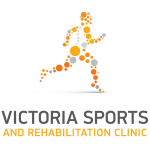and what does it do?
The “Core” is used to describe a group of muscles, which provide stability for the body, in particularly the spine and pelvis. It is also often referred to as your core cylinder or a cylinder of support due to the position and orientation of these muscles.
The main muscles that make up your core are:
- Transverse Abdominis (your deeper, “corset” stomach muscle)
- Pelvic Floor (the muscle group that supports the bladder, uterus and bowel as it acts like a hammock)
- Multifidus- one of your deep back muscles that provides stability during movement
- Diaphragm- the muscle underneath the rib cage which activates and releases as you breathe to help regulate your abdominal pressure
These muscles then have strong attachments and functional links with other muscles, such as your obliques (internal and external), lats and surrounding joints like shoulders and hips. This means, that when the core is working, when you move your arms or legs your back is well protected, supported and stable!
The core can stop working as well for a variety of reasons, such as during pregnancy and postpartum, episodes of acute back pain and following surgeries. This can lead to a number of complications in the body including pain, restrictions as well as more serious complications such as leaking of the bladder, prolapses of the organs that it supports, hernias and many more.
It is really important to look after these muscles and keep them strong, so if you are wondering how yours is functioning please ask your Osteopath at your next appointment for an assessment.
